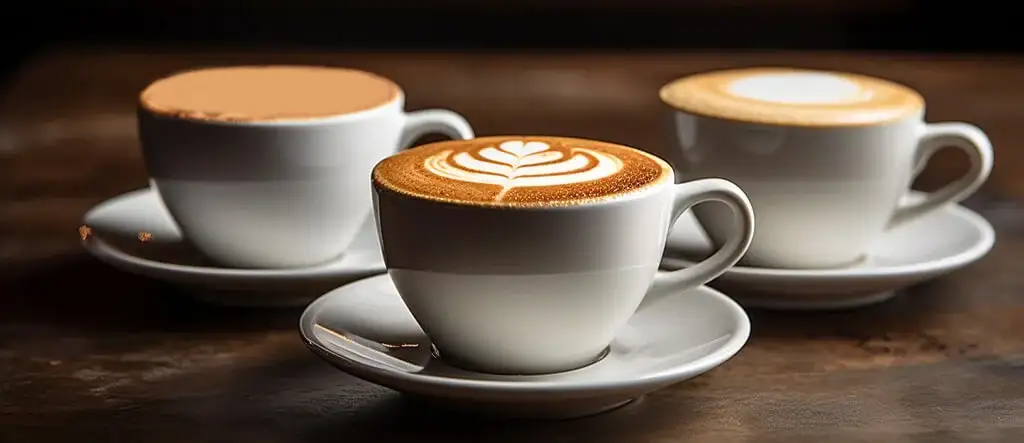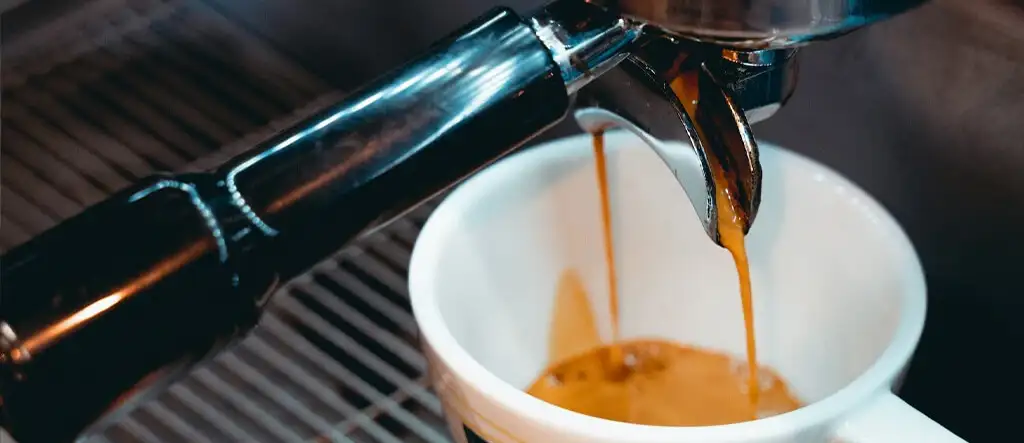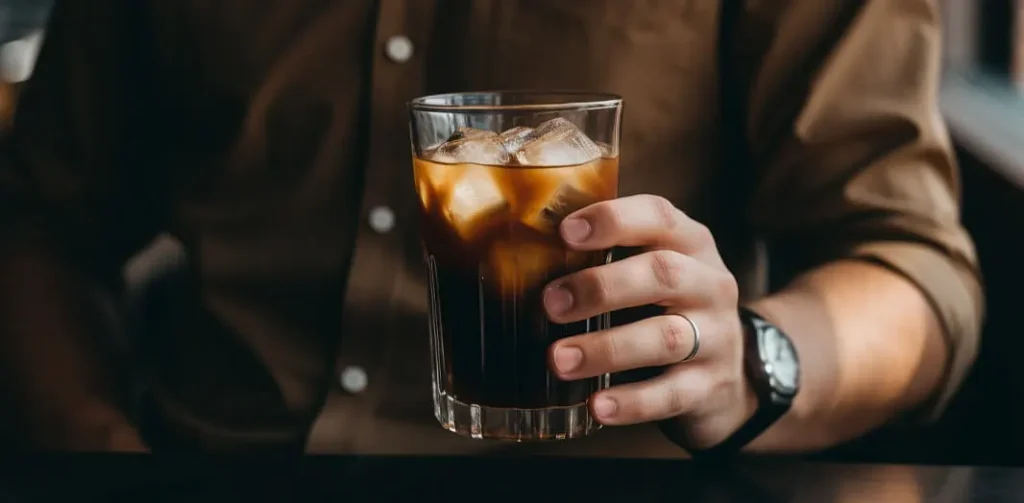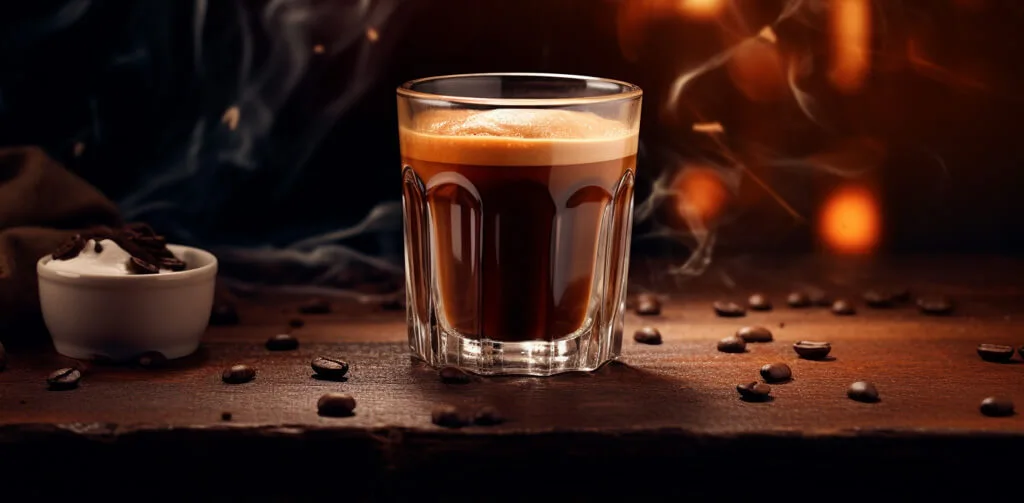Have you ever found yourself in a coffee shop unsure whether to order a cappuccino, white, or latte at the counter? You’re not alone, in facing this coffee dilemma.
Through my exploration driven by curiosity and fueled by cups and extensive research, I discovered that these popular beverages primarily differ in their proportions of espresso, milk, and foam.
In this blog post, we will delve into the characteristics that define each drink to help you confidently approach the counter on your coffee outing.
So. Get ready, for a journey filled with caffeinated knowledge!
Key Takeaways
- The cappuccino, white, and latte each have their distinct characteristics in terms of the balance of milk, to espresso the texture and frothiness of the drink as well, as their historical backgrounds and cultural importance.
- Every beverage offers a flavor profile based on how much milk is used compared to espresso and the consistency of the foam.
- Achieving the blend of ingredients and proportions is crucial when preparing these drinks.
The Difference Between Cappuccino, Flat White, and Latte
Cappuccino, white, and latte vary in the proportion of milk, to espresso, texture, and foam well as their origins and cultural importance.
The ratio of milk to espresso
Getting the mix of milk and espresso is crucial when making a cup of coffee whether it’s a cappuccino, latte, or flat white. This harmony distinguishes these coffee drinks.
A typical flat white maintains a ratio of 1;3, for espresso to milk resulting in a velvety texture that appeals to coffee enthusiasts. On the other hand, lattes have milk than the traditional cappuccino giving them a lighter flavor and mouthfeel.
However, if you lean towards flavors then smoothness cappuccinos take the lead – thanks to their higher espresso ratio served in smaller cups of about 5 6 ounces providing a bolder kick compared to both flat whites and lattes.
Whether you’re new to using an espresso machine at home or a barista, in cafes – nailing this delicate balance not only delights your taste buds but also turns each sip into a memorable experience!
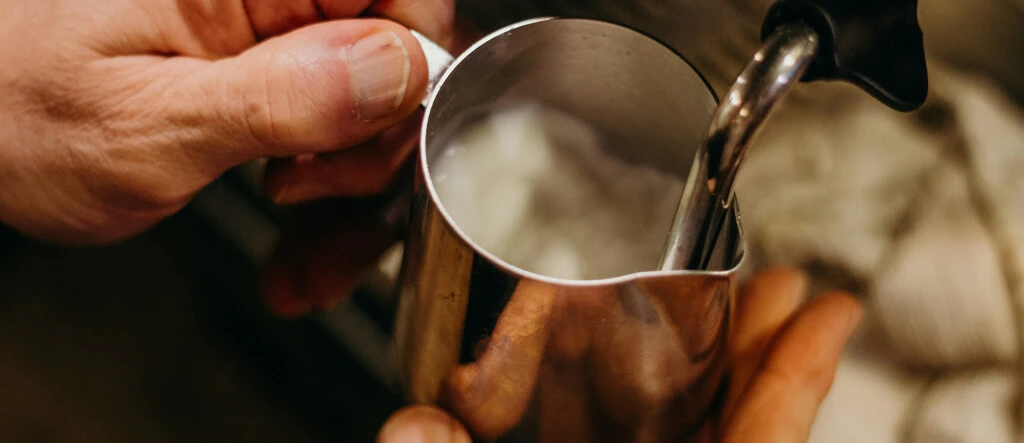
Texture and foam
Let’s explore the world of foam and texture. A cappuccino is distinguished by its microfoam layer that lends it a silky velvety feel. The frothy milk envelops your taste buds offering an experience as you enjoy your beverage.
On the other hand, a flat white boasts foam at the top but still retains a noticeable touch of froth. While both lattes and flat whites feature 0.2 inches of milk on top the flat white tends to be more understated in this aspect.
Nevertheless, that delicate thin layer delivers the amount of smoothness to keep you coming back for more.
Origins and cultural significance
The fascinating history, behind our coffee beverages adds a touch of mystery to every sip. Originating from Italy the cappuccino holds a place in the hearts of cafés. Its name, inspired by the Cappuccino monks and their robe-colored similarity has made it an iconic drink worldwide.
Conversely, the flat white isn’t a creation. Rather hails from Australia and New Zealand. Introduced around 1970 as an alternative to lattes and cappuccinos flat whites have gained popularity for their velvety texture.
Shifting gears to the latte this delightful espresso concoction didn’t originate in Italy. Instead has its origins in coffee culture where it evolved into a creamier version of the traditional caffè latte! So whether you’re enjoying these drinks at your café or, as part of your morning routine remember that you’re participating in a tradition that transcends cultures and time zones.
Composition and Preparation
To make a cappuccino, you need equal parts espresso, steamed milk, and frothed milk.
Ingredients and proportions
When preparing cappuccinos, lattes, and flat whites it’s crucial to nail the ingredients and proportions. Here’s a rundown;
- Cappuccino; To create a cappuccino, with a bold flavor you’ll need equal parts espresso, steamed milk, and foam.
- Flat White; Achieving balance is key, for a white. It comprises one or two shots of espresso paired with an amount of milk to give it a smooth and velvety texture.
- Latte; Lattes are favored for their texture. They’re crafted using one or two shots of espresso with a quantity of milk to produce a lighter beverage.
Espresso shots and milk texturing
I enjoy how espresso and milk blend together to make that perfect cup of coffee. Let me share some points about espresso shots and milk preparation;
- Cappuccinos have less steamed or frothed milk compared to lattes.
- Lattes are created by pouring microfoam milk over espresso shots.
- Both cappuccinos and lattes include espresso, steamed milk, and frothed milk.
- The balance between espresso and milk/foam is what sets cappuccinos apart from lattes.
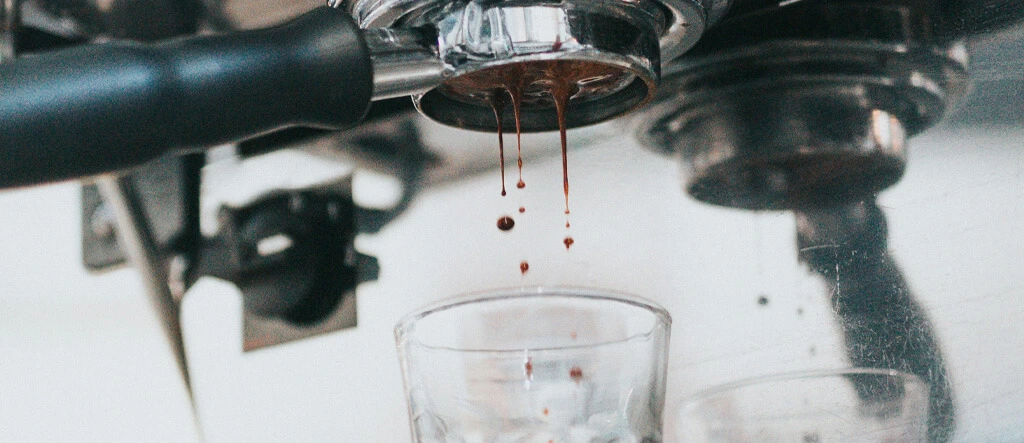
Variations and Flavor Profiles
Each coffee drink, like cappuccino, flat white, and latte, has a distinct flavor profile because of the differences in how much milk is mixed with espresso and the frothiness of the foam.
Differences in taste and mouthfeel
Different types of coffee drinks, such as cappuccinos, lattes, and flat whites, each have flavors and textures. Cappuccinos are recognized for their frothy texture, which is achieved by having foam rather than milk. This foam creates a light and airy feeling in the mouth.
On the contrary flat whites offer a bolder coffee taste with a velvety texture. They have less foam and still provide a rich flavor profile.
Lattes on the other hand are known for their consistency due to the higher milk content. This helps to mellow out the espresso taste making them a great choice, for adding flavored syrups or sweeteners.
Caffeine content
The amount of caffeine in cappuccinos, flat whites, and lattes may differ slightly. A regular flat white typically contains about 136mg of caffeine while a latte’s caffeine content is similar to that of a cappuccino – 173mg per 16-ounce serving.
On the other hand, macchiatos have a caffeine content of around 85mg per 16-ounce serving. Despite these differences, the variations in caffeine levels among these coffee drinks are minimal.
Milk options and dietary considerations
When deciding between cappuccinos, lattes, and flat whites, it’s essential to consider the milk choices and any dietary concerns you might have. Luckily, these popular coffee drinks can be prepared using dairy alternatives or plant-based milks.
Whether you’re sensitive to lactose following a vegan lifestyle or simply enjoy the taste of dairy options there are numerous substitutes to select from. These milk alternatives not only accommodate dietary restrictions but also add distinctive flavors to your beverages.
Apart from meeting regular requirements, the type of milk used also impacts the consistency and feel of your drink. For instance, opting for oat milk can yield a slightly sweet taste and texture.
Conversely, almond milk introduces a subtle hint while creating a body in contrast. Soy milk tends to produce froth when steamed for those who prefer foam in their beverage.
The array of milk choices allows cappuccinos, lattes, and flat whites to be drinks that can be personalized to individual tastes perfectly. Recognizing how various milks influence the flavor and texture variances in these beverages is crucial, for making choices on what suits you best based on your dietary requirements and preferences.
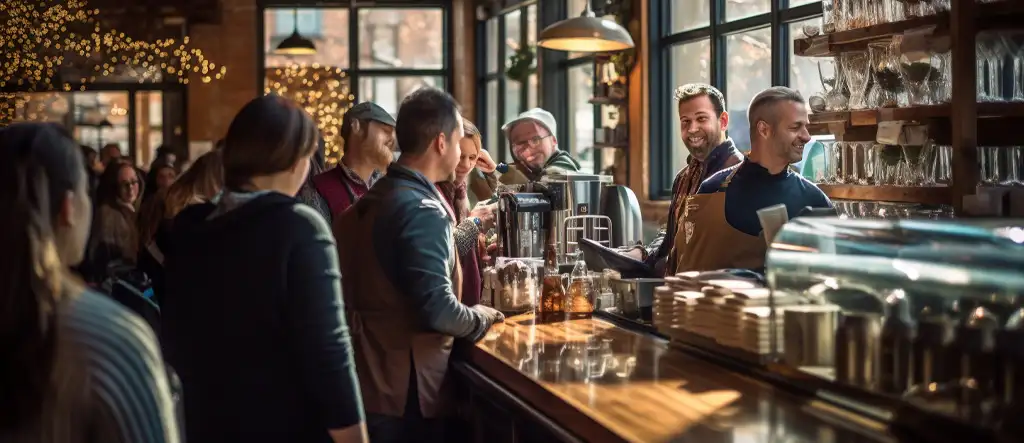
Coffee Shop Culture and Presentation
The culture of coffee shops has seamlessly woven itself into our routines offering not a simple cup of coffee but also a delightful experience, through artistic latte designs, skilled baristas and exciting new trends that are making waves in the world of coffee enthusiasts.
Latte art
Latte art plays a role, in the coffee shop scene by enhancing the appeal of drinks like lattes, cappuccinos and flat whites. It gives baristas a platform to display their creativity through milk foam designs on the drinks surface.
By mastering the art of creating patterns and shapes with milk foam in lattes and flat whites, baristas can showcase their talent through techniques like etching or free pouring. These artistic expressions elevate a drink into a stunning masterpiece, showcasing the barista’s creativity and enriching the overall coffee-drinking experience.
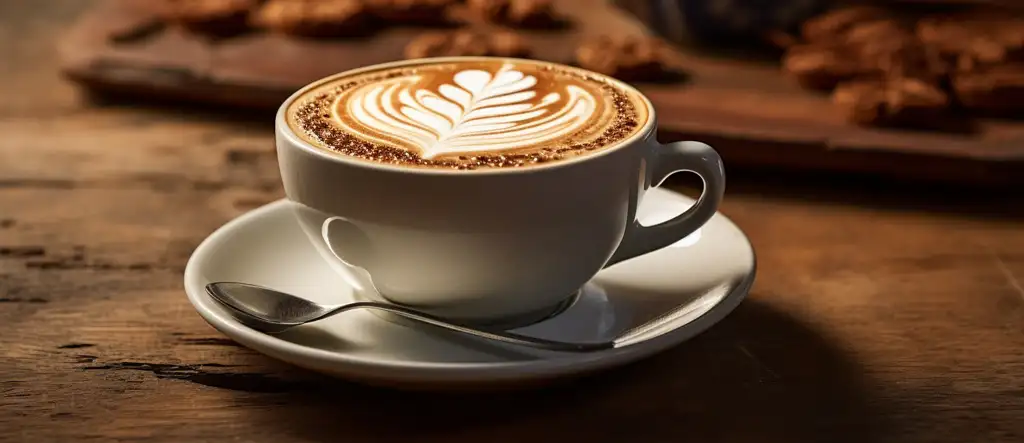
Popularity and trends
I’ve noticed a rise in the popularity of milk-based coffee drinks such as cappuccino, flat white, and latte within coffee shop culture. People are attracted to their flavors and the craftsmanship involved in making them.
Artisanal beverages like nitro cold brew and pour-over coffee are now staples at specialty coffee shops. Customers are increasingly curious about the origins of their beans and how they are sourced.
Talented baristas can create latte art, which has become a trend. As the coffee scene progresses, it’s essential for cafes to stay abreast of trends to cater to customers’ diverse tastes and ensure repeat business.
Barista skills and techniques
As a barista, I’ve refined my skills and methods to make the ideal cup of coffee. My expertise extends to types of coffee bean grinding techniques and extraction methods. This allows me to skillfully prepare drinks that bring out the flavors and scents of each bean.
Moreover, I take pride in understanding customers’ preferences and crafting custom beverages that perfectly suit their tastes. Whether it’s a latte, cappuccino, or cold brew, I understand blending milk and espresso to create flavor profiles.
Drawing inspiration from coffee traditions, I appreciate the significance of milk proportions and how they influence taste. Being a barista isn’t a job; it’s an art form that demands commitment and a constant pursuit of excellence. I’m always eager to acquire skills and techniques that will elevate the quality of every cup I serve.
- Understanding types of beans
- Mastery of grinding techniques
- Skill in extracting flavors
- Interpreting customer tastes
- Crafting customized drinks
- Mixing espresso and milk for the best taste
- Knowing the right milk proportions, for various coffee varieties
Wrapping Up
In summary, grasping the distinctions between cappuccino, flat white, and latte can really elevate your coffee enjoyment. Understanding that a cappuccino consists of equal parts espresso, steamed milk, and frothed milk, whereas a flat white contains milk and foam, can help you select the drink to match your taste preferences.
Moreover being mindful of the differences in cup sizes and caffeine levels, in each beverage empowers you to make a informed choice when ordering at a coffee shop. So don’t hesitate to try out these options and discover your favorite!

